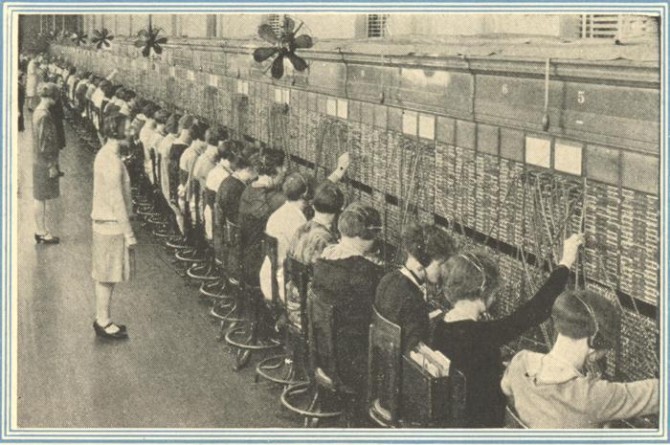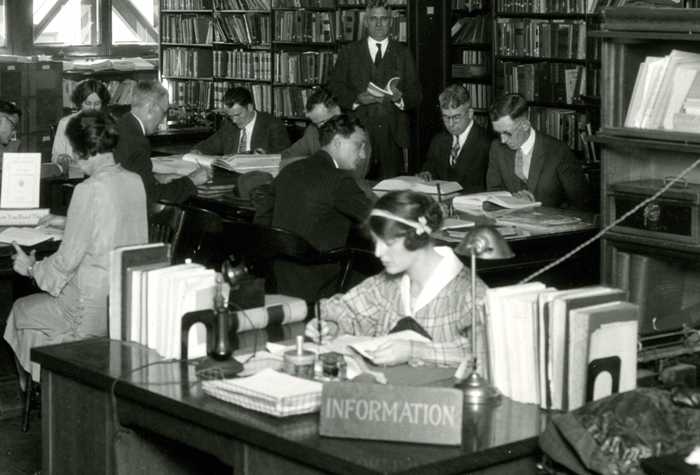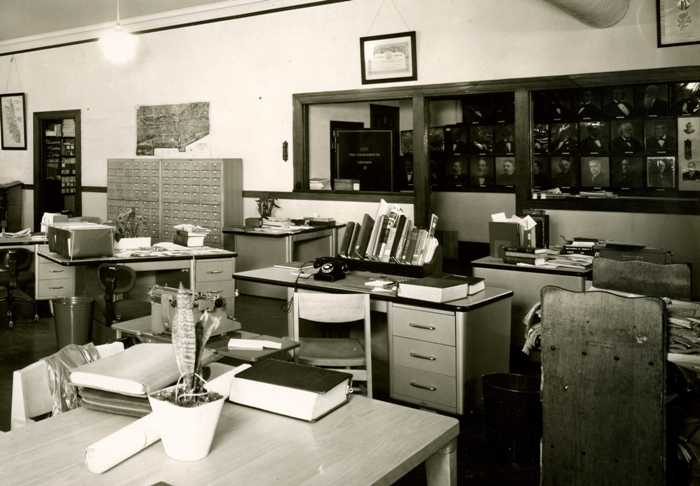1894: Bell's telephone patents expire, but the Chicago Telephone Company remains dominant despite new competition.
1899: The Illinois Telephone and Telegraph Company began building freight tunnels under the Loop, claiming the tunnels were conduits for a new automatic telephone system. The company never had more than 20,000 subscribers, but did build some 60 miles of freight tunnels. A City Council committee later concluded that the automatic telephone (no operator) promoted gambling and illicit liaisons.
1900: 34,414 telephones, four times the number a decade earlier.
1910: 239,083 telephones.
1920: 557,981 telephones. Chicago Telephone Company becomes Illinois Bell.
1923: Illinois Bell begins automatic telephone service. Initially operators do the dialing. It takes until 1960 to extend the dial telephone citywide.
1928: 914,000 telephones. Trans-Atlantic radiotelephone service had begun the year before.
1931: 953,203 telephones. The number of telephones grows even during the Great Depression.
1947: 1,396,387 telephones. Area codes begin. The Chicago metro area is 312. Long distance calls still require operator assistance.
1960: 1,931,694 telephones. Chicago becomes 100 per cent dial. Lawndale, the last manual office, closes.
1961: Direct dial long-distance begins in Chicago.
1980s: AT&T broken up. New telephone companies and the popularity of pagers, dialup modems, answering machines and fax machines create an immense demand for telephone numbers. Between 1989 and 1996, the 312 area code splits in four: 312, 630, 708 and 773. Operators become a thing of the past. Pay phones restricted in Chicago due to worries over illegal use.
21st Century: Pagers, pay phones, dialup modems and faxes mostly obsolete, landlines slowly declining.
For more information see the Chicago telephone history booklist.





Add a comment to: Telephones, 1893-Present: Technology That Changed Chicago